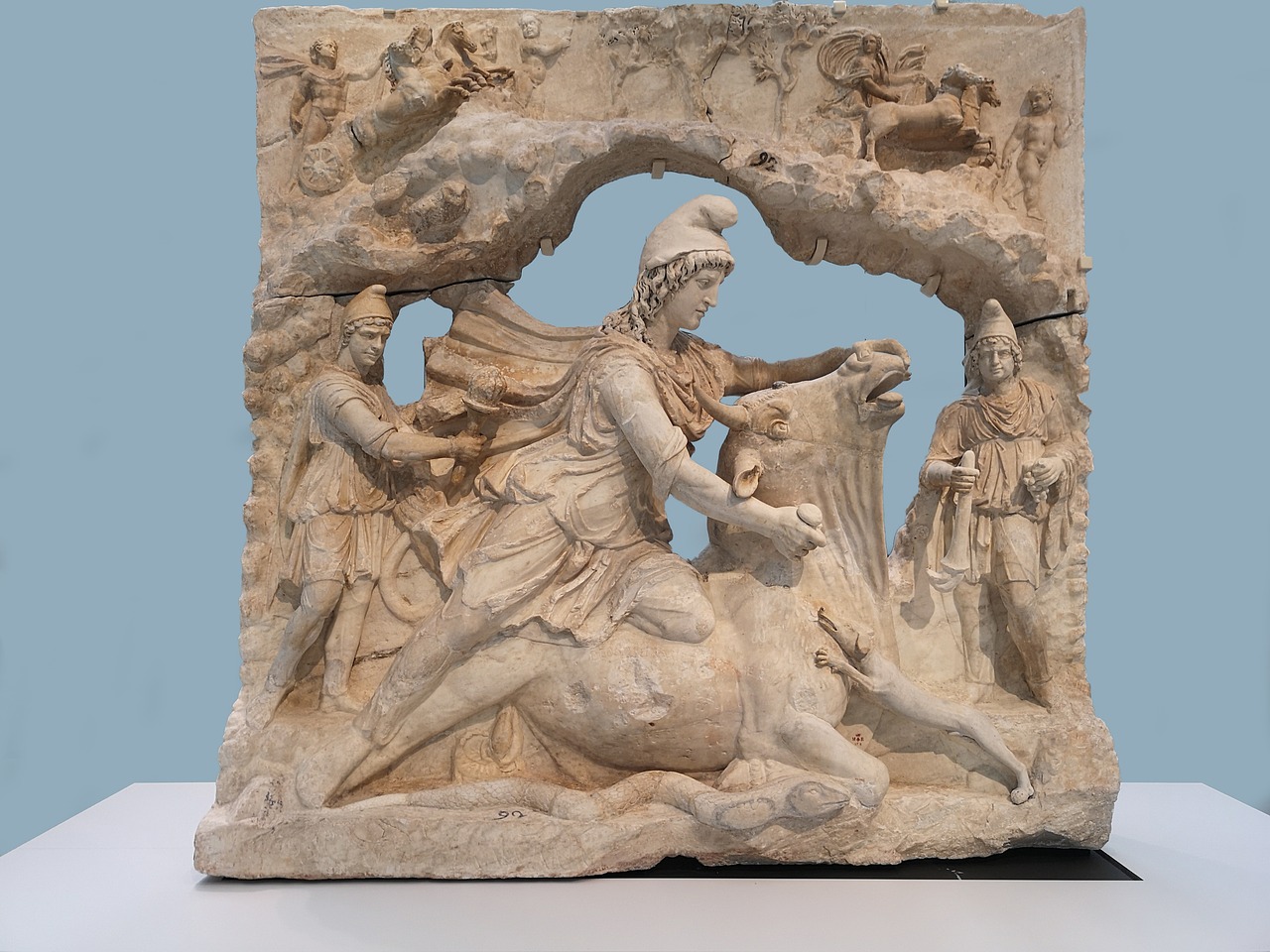Ernst Renan, the distinguished 19th-century historian and philologist, posits a thought-provoking “what if” scenario: Had the Roman Empire not embraced Christianity, it would likely have adopted Mithraism instead. This contentious idea resonates within the dystopian narrative of Raised by Wolves, illustrating how the Mithraic cult has endured as a focal point for a diverse range of secret societies, contemporary religious movements, scholarly inquiries, and pop-cultural expressions.
The Rise of Mithras
The Roman cult of Mithras emerged under enigmatic circumstances in the late 1st century AD and quickly became one of the most captivating cults in the archaeological landscape of the Roman Empire, particularly during Emperor Trajan’s reign (98-117 AD). In the early years of the Iulius-Claudian dynasty, this cult was not overtly Roman; rather, it had roots in the Hellenistic world where the Mithra-Helios worship took hold, albeit differing significantly in iconography and theology from the Roman interpretation that gained traction post-90 AD.
Scholars, with notable contributions from figures like Attilio Mastrocinque, often place the inception of this distinctive Roman cult earlier in Emperor Augustus’s time. However, consensus among experts indicates that it was during Emperor Nero’s reign in the 60s AD that seismic shifts laid the groundwork for the cult to flourish by the 90s. This period is pivotal as it delineates the formative years that structured the movement, akin to the Age of Apostles in early Christianity.
Mithras’ introduction to Rome coincided with an influx of Persian aristocrats and the flourishing of communities from regions such as Cilicia and Commagene, indicative of a deepening cultural and political relationship with the Middle East. These Eastern ties provided a fertile backdrop for Mithras, whose emergence was eagerly anticipated in Roman consciousness as an exotic deity, rooted in the narratives of Zoroastrianism and reflective of Roman fascination with Eastern philosophy.
Despite perceptions labeling this emerging religion as Persian, the cult was, in fact, a Greco-Roman synthesis, bringing together Hellenistic mystery traditions, Orphic influences, and elements from Neoplatonism. This syncretism marked the cult as a product of the cultural amalgamation inherent in the Roman Empire—reflecting various interactions between polytheistic and monotheistic ideologies. Such fusion facilitated rapid propagation throughout Roman territories, propelled by the empire’s dynamic military and administrative structures.
The Mysteries of Mithras
The essence of the Mithraic cult drew from an elaborate and enigmatic mythology chronicling the life of Mithras, ranging from his miraculous birth from a rock (Mithras Petrogenitus) to his heroic feats, and culminating in the legendary bull sacrifice that symbolically generated new life and opened celestial realms for souls. The narratives surrounding Mithras evolved over time and space, reflected in sculptural and mural art that varied across different regions, capturing the essence of this enthralling story.
Unlike more universal cults with centralized shrines such as those dedicated to Artemis or Jupiter, the Mithraic gatherings were characterized by a lack of expansive public prominence. The cult’s initiation rites were intricate and exclusive, ultimately barring female participation, a detail that led some scholars, including Renan, to misjudge its role as a competitor to Christianity.
Mithraic initiation involved seven degrees of secrecy, often intimidating for average Romans. The worship spaces, termed mithraeums, were unpretentious environments, often resembling caves or simple urban precincts, intended for intimate gatherings of believers. While Roman temples were grand and monumental, mithraeums offered dimly lit sanctuaries that shrouded the rites in a veil of mystery. At their zenith, these shrines proliferated across the empire, with Hungary housing several notable sites such as the reconstructed sanctuaries at Fertőrákos and Aquincum.
Decline and Rediscovery
As Christianity rose to prominence during the late 4th and early 5th centuries, the cult of Mithras gradually waned, with many of its shrines falling into disuse. Some temples transitioned to Christian usage, while remnants of the Mithraic legacy, like frescoes in the Basilica of the Santi Quattro Coronati, hinted at a continued awareness of its mysteries throughout the Middle Ages.
The Renaissance sparked renewed interest in the cult, as artists and scholars uncovered ancient literary works and sculptural treasures. The discovery of Mithras’ statues and artifacts during extensive renovations captivated Renaissance minds, leading to diverse interpretations of the cult, ranging from Persian origins to symbols of fertility and hidden knowledge.
In the context of 18th and 19th-century Freemasonry, Mithras gained remarkable significance as a source of spiritual inspiration for male-only rites, yet by this time, the figure of Mithras had morphed into a reimagined icon devoid of its ancient characteristics. An archaeological resurgence followed, with numerous Mithraic sites excavated across Europe contributing to a comprehensive understanding of this enigmatic faith.
As the 20th century progressed, many well-preserved Mithraic shrines were studied, enhancing the awareness of Roman religious architecture and daily practice. A striking dimension emerged in the contemporary period as neo-pagan movements began to draw parallels with Mithraism, reconstructing its principles and integrating them into a modern spiritual framework.
Today, the enduring appeal of the Roman Mithras cult spans various domains—from academic exploration and cultural tourism to its presence in cinema and new religious movements. Its intricate legacy continues to captivate interest across the globe, representing a bridge between ancient belief systems and present-day spirituality.
The Roman cult of Mithras stands as a testament to a rich historical tapestry that invites renewed inquiry into the past, ultimately enriching modern consciousness with its multifaceted narratives.



